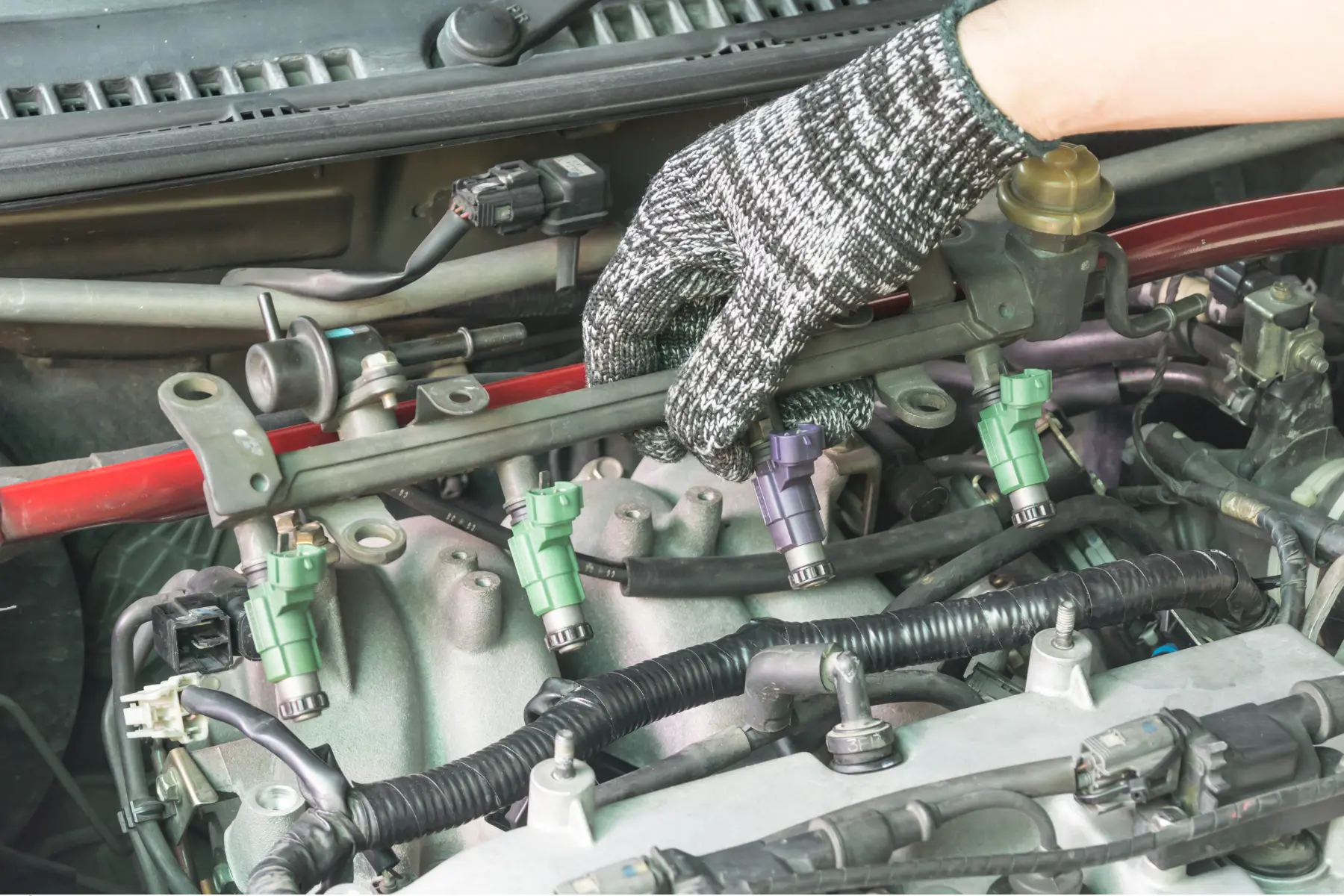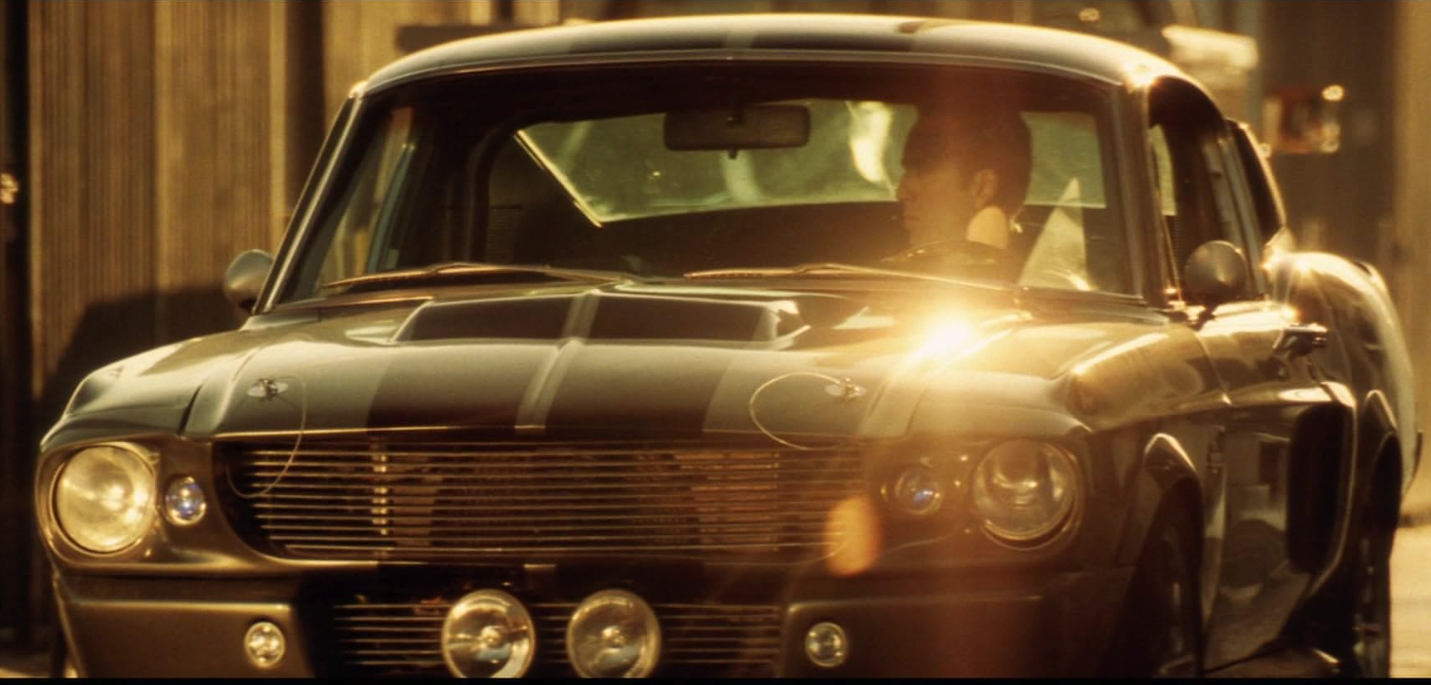“On the Road” is a podcast produced by JC Whitney. We bring you interviews with a cavalcade of figures from across the world all united by one thing: their undying love of all things automotive. The following has been edited for length and clarity.
In this episode, Angel Sala-Belen sits down with Jim Liaw, the man who introduced Formula Drift to the United States and helped transform it into a global phenomenon. As co-founder of Formula Drift and now General Manager of PRI (Performance Racing Industry), Jim shares his journey from growing up in Southern California car culture to building an entirely new motorsport genre in the U.S.
Angel Sala-Belen: Hello, and welcome to JC Whitney’s On the Road. I’m your host, Angel Sala-Belen, and today we have Jim Liaw in the studio. Jim, how are you doing, sir?
Jim Liaw: I’m good! All right, thanks for having me.
Angel Sala-Belen: Yeah, yeah, glad to have you here. You know, you’re the guy when it comes to Formula Drift in the United States—you introduced it to us. So let’s talk about that a little bit more.
Jim Liaw: Sure.
Angel Sala-Belen: So first question: what or who introduced you to drifting?
Jim Liaw: I wouldn’t say there’s a specific person or entity that introduced me to drifting. You know, I grew up in Southern California culture—all my friends were into import cars, and that was kind of the scene we were in. Even professionally, where I was working, we were surrounded by Japanese performance companies and doing a lot of work with them.
Really, it was the community that bridged U.S. car culture and Japanese car culture—especially the guys modifying import cars here. That community of brands from Japan showcased a lot of what was going on there. Among the subgenres of Japanese performance, drifting was fairly new. They would share videos and articles about the cars and what they could do. This was before the internet, so it was all physical media.
Drifting immediately sparked interest because it’s such a visual sport. Whether you understand it or not, whether it’s for competition or demonstration, the car control and the artistic part of the driving are really appealing.
Angel Sala-Belen: That ties into the scoring system in Formula Drift, where style is a major component. It’s about the visual aspect of it—how much style you have. Sure, you can flip a car around, but can you send it 100 yards before the turn?
Jim Liaw: Exactly, and then balancing that with car control. Back in the early days, we had 3,280-lb, 300-horsepower cars—semi-built, probably something you’d take out on the weekend. Fast-forward 20 years, and now we’re talking about purpose-built, sub-2,000-lb, 1,000-horsepower race cars. How do you control that?
It’s about showcasing car control—can I put my car where I’m told to put it? Then add the nuance: can I showcase individuality, style, uniqueness, and aggressiveness in my driving without going into the wall or off track? And then do that while leading or chasing another driver, trying to do the same thing.
Angel Sala-Belen: Yeah, yeah, yeah. It seems like the introduction of that sport created an entire industry to support its needs—like steering racks and specialized equipment to enhance the sport from 20 years ago to now.
Jim Liaw: Our timing was fortunate, though not intentional. The sport created an additional industry of specialty parts like steering racks and angle kits, but it also expanded what current part makers were doing. As drifting advanced and cars became more powerful, we learned a lot from off-road racing and drag racing.
These are 1,000-horsepower race cars, so things break. Drivetrain technology from drag cars, suspension techniques from rally cars—all of that came into play. As a result of the sport and the series, existing companies found new audiences and adapted their products to serve drifting.
Angel Sala-Belen: Formula 1 does a lot of that, too—creating tech that serves multiple purposes. I feel like Formula Drift is falling in line with that, especially as we move toward an EV future. How do we make electric cars do the fun stuff that internal combustion engines have done for years?
Jim Liaw: We’re not a Tier 1 series like Formula 1 or NASCAR, but we bridge the gap between enthusiasts tinkering in their garages and teams innovating on the track. There’s a lot of room for experimentation and innovation.
As for EVs—are they the future? Probably. Are we seeing them now? In bits and pieces. Is the series open to it? Absolutely. It’s up to the builders and teams to adapt and innovate. Whether it’s a mix of combustion engines and EVs on the track or separate classes, that remains to be seen.
Angel Sala-Belen: That kind of segues into what you do at PRI, right? Figuring out regulations and sanctioning for racing.
Jim Liaw: Yes, and PRI is unique. It’s not just a trade show—it’s an organization with multiple pillars. The PRI Show is the biggest all-racing, multi-genre B2B event in the world. It brings together different disciplines of racing—drag, dirt track, off-road—under one roof. Instead of attending events across the country to learn about new parts and technology, you can see it all in three days at PRI. That cross-pollination of ideas is what makes the show so unique.
Angel Sala-Belen: What was the biggest hurdle when bringing drift culture to America?
Jim Liaw: There were a few. Among the purists, there was always a shadow cast by Japan, where drifting originated. People questioned whether we were on par with or equal to what was done in Japan. It took a couple of seasons to get past that and prove we were legitimate.
In the U.S., we also had to fight as the new kid on the block. It was a new genre of motorsports—thousand-horsepower cars judged subjectively, not on start-to-finish racing. It took time to help people understand the sport and how it worked.
Angel Sala-Belen: It’s that hurdle of breaking into acceptance. But having that pushback elevates the competitiveness and forces you to test yourselves.
Jim Liaw: It’s a love-hate relationship. You don’t want to be the underdog, but it fuels your drive. Drifting has a younger audience, unparalleled social media engagement, and unique metrics. But we still have to fight for attention compared to NASCAR or IndyCar.
Angel Sala-Belen: Was there a moment when you knew Formula Drift was going to work?
Jim Liaw: Probably at the end of season three. We grew from four rounds to seven, and it consumed all our time. Revenue started coming in, and we realized we had to focus 100% on Formula Drift. By season four, we’d shelved all other agency projects and put everything into the series.
Angel Sala-Belen: What’s a day in the life like for the GM of PRI?
Jim Liaw: I wear a lot of hats, but I see myself as a bridge between the team on the ground and the leadership team. Events are events—whether it’s the PRI Show or a Formula Drift series—but seeing progress and the team coming together to pull off a great event is the most rewarding part.
Angel Sala-Belen: Do you have a defining moment in a car that inspired your path?
Jim Liaw: Two moments stand out. One was seeing the 1988 BMW E30 M3—it looked different, with its boxy lines and flares, and it drew me into car culture. The other was at the Long Beach Grand Prix. Hearing the distinct engine tones and feeling the energy of the event made me realize I needed to be in motorsports.
Angel Sala-Belen: How can people stay in touch with PRI and what you’re doing?
Jim Liaw: Visit performanceracing.com. You’ll find everything about the PRI Show, magazine, videos, and membership. Membership starts at $40 annually and supports motorsports advocacy, from track regulations to protecting car modifications.
Angel Sala-Belen: Magnificent. Jim, I appreciate it.
Jim Liaw: Thank you. Thanks for having me.
Angel Sala-Belen: If you have any questions, drop them in the comments below, and we’ll get back to you. Thanks for stopping by, and see you next week!





